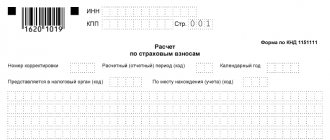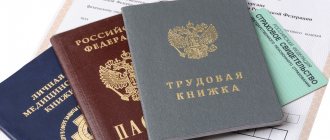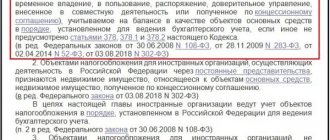Legislative regulation
Regulatory support for the Unified Social Tax is formalized at several levels, here they are:
- The mandatory presence of taxes in social spheres is prescribed in the Constitution of the Russian Federation. This act is key, because it is at the first level in the hierarchy of legal acts.
At the first level there are all types of codes.- Laws adopted at the federal level can also be classified as first-level regulations. The unified social tax was introduced on January 1, 2011 in accordance with Federal Law No. 118 of May 5, 2000. In this form, social tax deductions existed for nine years. And starting from 01/01/2010, the tax took its usual form.
When is it paid?
To avoid problems with the Federal Tax Service, it is important to correctly calculate and timely pay different types of fees. UST payers must take into account some nuances:
- tax is paid based on the results of reporting periods, which are quarters, and funds are transferred before the 20th day of the month following the reporting time period;
- To do this, you need to calculate the difference between the calculated and previously paid tax, and the money received is transferred to the Federal Tax Service;
- advance payments are calculated at the end of each month within the quarter;
- The declaration for this fee is submitted after the results of the year, which is the tax period, have been summed up, with the deadline for this being 30 March.
Who pays the UST? Photo: financelimit.ru
Important! Late payment or submission of the Unified Tax Tax return is grounds for the accrual of significant fines.
Which transfers are not subject to the fee?
List of payments for which UST is not required to be paid:
- different types of benefits assigned by the state and paid in accordance with numerous requirements and rules, and they can be established not only at the federal level, but also by local authorities, as well as decisions made by government agencies;
- benefits provided to parents who care for their children;
- maternity benefits or temporary disability benefits;
- compensation paid to employees as a result of their dismissal, as well as for unused vacation or compensation for harm due to injury at work;
- compensation payments assigned in the form of providing employees with free housing, payment for utilities and fuel, as well as food;
- other types of monetary compensation.
Important! To correctly calculate the fee, every entrepreneur or accountant who is involved in preparing declarations and paying taxes must understand the correct determination of the tax base under the Unified Social Tax.
Object of taxation
The Tax Code of the Russian Federation specifies several objects of taxation under the Unified Social Tax, which every taxpayer needs to know in order to pay them. More precisely, these payments are provided for in a legally certified employment agreement concluded between the applicant and the employer and an agreement on additional remuneration that is attributed to individuals. persons.
In paragraph number 3 of Article 236 of the Tax Code of the Russian Federation, it is clearly stated that the objects of payment will not be recognized or related to actual payments that in no way reduce the size of the tax base. Precisely, in this regard, there is no refund on them, and there is no need to pay them.
Differences between insurance premium and UST
As a rule, the standard insurance deduction is 30%; it must be paid in this amount regardless of the taxation method used by the enterprise.
All the main differences between these two payments can be divided into pleasant and unpleasant for citizens (see Table 1).
| Favorable moments | Unpleasant moments |
| Clear definition and maintenance of the contribution base. Relatively small penalties for non-payment. Cancel account freeze. | Taxpayers paying pensions to citizens with disabilities or transferring money to other similar charitable organizations will not be exempt from insurance payments, but a special reduced rate is provided for them. In a situation where financial assistance to an employee is more than 4,000 rubles, the amount will be subject to an insurance deduction. A one-time provision of financial assistance is not included in the general base for calculating insurance contributions; this occurs only in a situation where the assistance was provided in the first year of the baby. Deadlines for failure to provide all settlement papers will be calculated by calendar days. The insurance deduction will be considered unpaid if an incorrect bank card code was written in the order. Papers confirming payments must be carefully stored for 7 years. All checks are carried out by employees of the Social Insurance Fund and the Pension Fund of Russia. |
More details about the Unified Social Tax on video:
Single insurance premium 2020
Speculation that the Federal Tax Service wants to introduce a single social contribution has been around for a long time. The practical abolition of the unified social tax (effective in 2001-2009) and the transition from a regressive method of calculating the scale to a constant one did not live up to the expectations. Taxpayers have received more complicated document flow in terms of generated reporting and payment documents, and the number of inspection bodies has increased. The state was faced with a decrease in the level of settlements with the budget and extra-budgetary funds, there were violations of payment discipline and a partial loss of control over the accrual of fees.
The return of administrative functions to tax authorities became a reality with the signing by the President of the Russian Federation V.V. Putin Decree No. 13 of January 15, 2016. A new chapter appeared in the Tax Code, insurance contributions to the Social Insurance Fund, Pension Fund and Compulsory Medical Insurance were combined into one tax. What has changed globally for taxpayers since 2020?
Unified social insurance contribution - main provisions:
- Administration - since 2020, carried out by the Federal Tax Service. The Social Insurance Fund retains control over the accrual and payment of “injuries”, while the Pension Fund retains control over reporting in the SZV-experience and SZV-M forms.
- Payers of contributions are employer companies (legal entities and individual entrepreneurs), entrepreneurs, self-employed people.
- Object of taxation - for employers, the base includes payments within the framework of interaction with employees, for individual entrepreneurs - income from activities.
- The general rate - the amount was kept at the level of 2020 and is 30%: in the Pension Fund - 22.%, in the Social Insurance Fund - 2.9%, in compulsory medical insurance - 5.1%. The procedure for using preferential reduced tariffs for certain categories of business has changed slightly.
- Fixed amount of contributions for individual entrepreneurs - calculation is carried out on the basis of the minimum wage, an additional percentage of income from exceeding the limit is established. The maximum income is 300 thousand rubles.
- Reporting - a new unified calculation for the ESSS has been approved, which should be submitted for the first time for the 1st quarter of 2020 by April 30 (due to weekends/holidays, the deadline has been postponed to May 2).
- The format for submitting reports is mandatory submission according to the TKS in electronic form for insurers with a staff of more than 25 people, all others have the right to report “on paper”.
- Payment of contributions - all payments generated from 2020 are compiled using new details (current account of the Federal Tax Service, KBK, name, INN/KPP of the recipient). Past periods are also paid to the Federal Tax Service, including settlements of penalties, arrears and fines.
- The deadlines for paying contributions have not changed. As before, companies must transfer the ESSS by the 15th day of the month following the reporting month. For fixed payments of individual entrepreneurs, different deadlines are established: within the limits, taxes must be paid before the end of the calendar year; for additional accruals, the deadlines are extended to April 1. 2018
- Responsibility for violation of the deadlines for payment of the ESSS - the sanctions provided for tax violations are applied (200 rubles for each report submitted late), up to blocking the current accounts of defaulters, sending collection requests to the bank to write off unpaid amounts. The Social Insurance Fund still has the right to apply sanctions on contributions for “injuries,” and Pension Fund employees can fine companies for violating the rules for submitting reports electronically (RUB 1,000) and for failure to comply with deadlines for submitting personalized records (RUB 500 is charged for each insured person). .
General tax rate of the UST
There is a general bet size that is suitable for almost all citizens. Typically, in a commercial enterprise, the director is the main taxpayer, who transfers contributions for all subordinates.
The UST rate (the general figure was given above) at the beginning of the current year 2020 includes:
- Payment for basic health insurance – 5.1%
- Deductions to pay off benefits for temporary incapacity, as well as child care benefits – 2.9%
- The payment to the Pension Fund of the Russian Federation is 22% of an individual’s salary
So far, the amount of UST deductions has not changed compared to 2018, but the rate increase is projected to increase, more on this below. You also need to take into account the insurance fence in case of injury to an employee. It must be transferred not to the Federal Tax Service, but to the Social Insurance Fund. The amount of such transfer will depend on the type of activity of the organization.
Social taxes in 2020: rates
Social fees include:
- pension insurance;
- social insurance in case of illness or maternity;
- health insurance;
- injury tax.
Until 2020, the administration of each type of deduction was carried out by the Funds. However, now the Federal Tax Service is in charge of all of them. The only exception was the fees for injuries, which remained under the jurisdiction of the FSS. Tariffs for the period from 2020 to 2020 are established in Article 426 of the Tax Code of the Russian Federation. The size of deductions for social needs, the total rate of which is 30%, is most conveniently presented in the table.
| Type of contribution | OPS, % | VNIm (OSS), % | Compulsory medical insurance, % |
| If the maximum base value does not exceed the limit of RUB 1,021,000. — for OPS, 815,000 rub. - for OSS | 22 | 2,9 | 5,1 |
| If the amount of the base exceeds the limit for OPS | 10 | — | 5,1 |
Please note that payments in excess of the maximum base are not subject to VNIM contributions. The amount of contributions for injuries, which, as we remember, must be transferred to the Social Insurance Fund, depends on the main type of activity of the company. It must be confirmed annually, depending on this the deduction rate will be from 0.2 to 8.5%.
How to correctly calculate the amount of unified social tax
As mentioned above, rates at the beginning of 2020 remained the same. The maximum allowable size of the base with contributions can be:
- In the Pension Fund - 876 thousand rubles, the amount may be less if this indicator has reached its limit.
- Insurance deductions – 755 thousand rubles. Upon reaching the limit, the bet is set to zero.
- If the amount of the fund into which the Pension Fund will be charged exceeds the permissible limit, then the tariff is reduced by 1%.
An illustrative example of calculation
To calculate the unified social tax, let’s imagine this situation: the organization “Zemlya” calculated a profit of 1,150 thousand rubles for one reporting period. You need to calculate the UST indicator and the amount for insurance.
To determine these values, you need to perform the following calculations:
The amount of social contributions within this limit of 718 thousand rubles: 718,000 * 2.9% = 20,822 rubles.- The amount of pension taxes to be repaid taking into account the limitation is 796,000 * 22% + ((1,150,000 – 796,000) * 10%) = 175,120 + 35,400 = 210,520 rubles.
- Medical payments will be 1,150,000 * 5.1% = 58,650 rubles.
Ultimately, we get the total amount of UST that is payable, it is: 20,822 + 210,520 + 58,650 = 289,992 rubles.
In order not to carry out large mathematical operations manually, you can use one of the online calculators. To find it, you need to enter the appropriate search query, then enter all the data according to the example presented above and get the result.
Features of calculations for individual entrepreneurs
By law, each individual entrepreneur may not pay the entire list of insurance deductions. Personally, they deduct only a certain amount for themselves. In the recent past, in order to calculate how much you need to pay, you had to clearly know the size of the minimum wage. But now this insurance fee has a specific amount.
Payments for individual entrepreneurs at the current time:
Compulsory medical insurance – 6,884 rubles- Pension Fund contribution – 29,354 rubles
Such amounts are established for all individual entrepreneurs whose annual income does not exceed 300 thousand rubles. If an entrepreneur has exceeded this limit, he is obliged to deduct an additional 1% from the amount that exceeded 300 thousand rubles.
For example, if an individual entrepreneur has an annual income of 500 thousand rubles, then you will additionally need to pay (500 thousand - 300 thousand) * 0.01 = 2,000 rubles.
Who pays the UST and how much?
Who pays? We can say that almost all citizens of the country. So, the following taxpayers are required to do this:
- An organization that pays wages to its employees;
- Individual entrepreneur and his employees;
- A citizen who has a private practice;
- An individual who is not self-employed but who pays employees or interacts with a contractor.
The UST rate in 2020 is:
- For payments to the pension fund - twenty-three percent;
- Health insurance – 5.1 percent;
- Insurance - three percent.
Categories of individual entrepreneurs for which benefits have been canceled
For 2020, only a few groups of individual entrepreneurs do not lose benefits:
Individual entrepreneur on the simplified market, practicing preferential activities, whose profitability is less than 70%. But with one limitation that the annual individual entrepreneur is no more than 78 million rubles.- Pharmacy companies and individual entrepreneurs who have the appropriate license to open and conduct a pharmaceutical business, on UTII.
- Individual entrepreneurs who apply a patent taxation system in relation to salary payments and other remunerations for their employees.
The concept of unified social tax
It is a unified social tax assigned by the federal authorities. All money received from entrepreneurs and companies is used to ensure the realization of people's rights to security, which can be not only social, but also pension or medical.
Important! The UST is represented by a tax, which is transferred not only to the state budget, but also to various other funds.
The taxpayers of this fee are:
Dear readers! Our articles talk about typical ways to resolve legal issues with debts, but each case is unique. If you want to find out how to solve your particular problem, please use the online consultant form on the right or call . It's fast and free!
- direct employees, which include individual entrepreneurs, lawyers or notaries, who do not use the services of other specialists in the process of work, therefore they transfer the UST tax at the expense of their personal money;
- employers, namely various companies and individual entrepreneurs who have officially registered citizens as employees, so tax is paid on their income.
Features of the UST. Photo: librisum.com
Thus, this tax is paid by citizens who decide to engage in entrepreneurial activity.
Who is the payer
In most cases, employers are the payers. Therefore, it is required to pay the Unified Tax:
- foreign companies that operate in Russia, and for this they can use divisions or operate without them;
- individuals or legal entities who draw up civil contracts with potential employees, on the basis of which labor relations arise between them;
- Individual entrepreneurs who do not have legal status, but at the same time they are official entrepreneurs, and this includes notaries, lawyers or private detectives, and the full list can be viewed in Art. 11 NK;
- communities of the North who work as farmers or are engaged in farming in traditional ways, but they pay tax only in a situation where, during work, they are forced to hire hired specialists who are paid a salary for the work.
Important! Often one subject belongs to several groups of taxpayers, and in this case it is required to pay a fee for each reason.
Do simplified tax regimes affect
In Art. 346.11 states that it is not required to pay unified tax to companies and individual entrepreneurs who use simplified systems for calculating taxes during their work.
Additionally, this fee is not paid for various payments or remunerations transferred to individuals, as well as for money that entrepreneurs receive from their activities.
Important! This tax is not relevant for entrepreneurs and firms that operate using simplified systems, which include Unified Agricultural Tax, UTII, simplified tax system and the patent system.
Changes in 2020
The current economic model cannot adapt to the current state of the market and the situation in general, so some changes are required to promote growth factors. It is precisely to achieve this growth that the system of collecting the single social tax will be reviewed and partially changed starting this year.
This innovation in a group with other measures will help prevent such a phenomenon as stagnation in the economy. Representatives of the Ministry of Economic Development claim that if measures are not taken now and the system of collecting unified social tax is not reviewed, then a new crisis cannot be avoided.
Of course, tax rates will be changed in the current 2020 and the Unified Social Tax is no exception. It is impossible to say unequivocally what consequences such a decision will lead to; we can only wait to see in which direction the functioning of the economic system will change in a year. The updated rates are already presented on the Federal Tax Service website and are freely available.
The Russian authorities remind that changes in the tax rate will only come into force after the elections, so there is no point in prematurely hoping for a significant reduction in the current levels of insurance payments.
It is worth noting that such losses will be compensated by increasing VAT, and this in turn affects the prices of goods and services.








